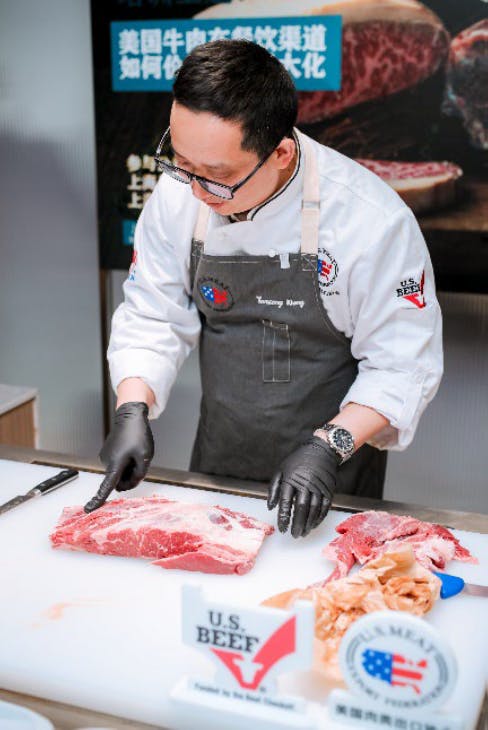New Opportunities Developing for U.S. Beef in China’s Foodservice Sector
China’s economy is off to a good start in 2023 as consumer spending rallies from extended pandemic restrictions. Foodservice is rebounding and importers are working aggressively with its restaurant customers to meet changing demand from consumers. The pursuit of fresh ideas is creating new opportunities for high-quality, grain-fed U.S. beef in a sector that is accustomed to lean, grass-fed beef from South America.
USMEF partnered with a key importer to conduct training on specific U.S. beef cuts for one of its customers, a hot pot chain with more than 150 outlets in top tier cities. The CEO of the restaurant chain joined members of its research and development and quality control teams and Shanghai Podun staff for the seminar, led by USMEF China Director Polly Zhao. She provided an overview of U.S. beef production with an emphasis on how structured grain-feeding programs in the United States contribute to the marbling that fosters cut versatility and creates superior flavor in U.S. beef.
“Shanghai Podun imports large volumes of U.S. beef every month and sees expanding opportunities to grow sales with many of its foodservice customers, including this chain,” says Zhao.
A guest chef delivered a cutting presentation to demonstrate the versatility and profitability of using several U.S. beef cuts, including chuck roll, boneless chuck short ribs, short plate, ribeye and top blade. He also explained proper food handling and defrosting techniques before preparing samples of several menu ideas with a variety of U.S. beef cuts. Zhao then described how USMEF works with importers and end-user clients on promotional activities that create demand for U.S. beef and repeat business for the restaurant.
“We are working closely with key players in the supply chain to increase awareness and knowledge about U.S. beef. The partnerships we develop with importers gives us a voice with their end-users, which enables us to help shape purchasing plans,” says Zhao.
This activity was funded by the Beef Checkoff Program.

